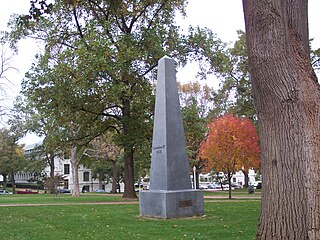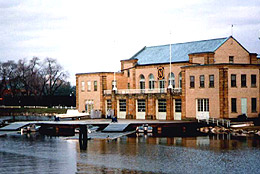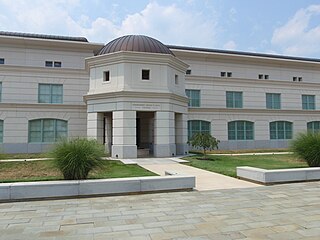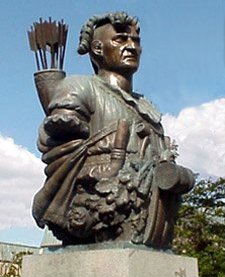 W
WAlumni Hall is an indoor stadium at the United States Naval Academy, in Annapolis in the U.S. state of Maryland. Completed in 1991, it seats 5,710 and serves as the primary assembly hall for the Brigade of Midshipmen. It is used for athletic contests — including basketball and wrestling — and is home for the Naval Academy women's and men's basketball teams, members of the Patriot League. Additionally, it is adaptable for lectures, assemblies, theatrical productions, concerts and official ceremonies and is home for the Bob Hope Center for the Performing Arts. It also plays host to numerous dinners and receptions through two first-class dining facilities. It also serves as an alternate location for Naval Academy graduation ceremonies when Navy-Marine Corps Memorial Stadium cannot be used due to inclement weather.
 W
WBancroft Hall, at the United States Naval Academy in Annapolis, Maryland, is said to be the largest contiguous set of academic dormitories in the U.S. Bancroft Hall, named after former U.S. Secretary of the Navy, and famous historian/author George Bancroft, is home for the entire brigade of 4,000 midshipmen, and contains some 1,700 rooms, 4.8 miles (7.7 km) of corridors, and 33 acres (13 ha) of floor space. All the basic facilities that midshipmen need for daily living are found in the hall. It is referred to as "Mother B" or "The Hall" by Midshipmen.
 W
WThe Tripoli Monument is the oldest military monument in the United States. It honors heroes of the United States Navy from the First Barbary War (1801–1805): Master Commandant Richard Somers, Lieutenant James Caldwell, James Decatur, Henry Wadsworth, Joseph Israel, and John Sword Dorsey. It was carved in Livorno, Italy in 1806 and brought to the United States on board the famous 1797 frigate USS Constitution. From its original installation in the Washington Navy Yard at the new national capital of Washington, D.C. in 1808, it was later moved to the west front terrace of the United States Capitol facing the National Mall in 1831, and finally to the United States Naval Academy campus in Annapolis, Maryland in 1860.
 W
WHalsey Field House is a multi-purpose arena at the United States Naval Academy, in Annapolis, Maryland, with a seating capacity of 5,000. It was home to the Navy Midshipmen men's basketball team until the Alumni Hall opened in 1991. It is named after FADM William "Bull" Halsey, a World War II United States Navy commander.
 W
WThe Herndon Monument on the grounds of the U.S. Naval Academy is a 21-foot-tall (6.4 m) grey granite obelisk. It was erected in memory of Captain William Lewis Herndon, who courageously decided to go down with his ship, SS Central America, and the men left aboard rather than save himself on September 12, 1857. All women and children and many of the men aboard were saved by a nearby ship during the storm.
 W
WHubbard Hall, often called "The Boat House," is the historic home of the United States Naval Academy's rowing teams in Annapolis, Maryland. Located on Dorsey Creek, off of the Severn River, it was completed in 1930 for the 40-man heavyweight rowing team. It supports the men's lightweight and heavyweight teams and the women's team with over 200 members. The Academy is in the process of completing a new USD $20 million renovation of the entire building including the rowing tank.
 W
WThe Jeannette Monument is the largest monument in the United States Naval Academy Cemetery. It memorializes the 1881 loss of USS Jeannette while exploring the Arctic ice. Jeannette, with a crew of 33, collapsed and sank under surging ice in the summer of 1881. Her crew, commanded by George W. DeLong, took to the ice dragging three small boats. When open water was found, the boats were used to sail to the Lena Delta of Siberia, 700 miles distant. DeLong commanded a boat of 14 total crew members, Executive Officer Charles W. Chipp's boat's crew was 8 total crew members, and Engineer Officer George W. Melville's boat had 11. Chipp's boat was lost at sea with all hands. Engineer Melville's boat landed in the southern delta, and DeLong's boat came ashore farther to the north on 17 September 1881. Melville quickly found aid, as did the two hardiest sailors of DeLong's crew soon after. The 12 remaining, including DeLong, perished from starvation or exposure. Thus 20 of the original 33 did not survive the expedition.
 W
WLejeune Hall is a sports complex and arena at the United States Naval Academy in Annapolis, Maryland. It currently houses the academy's boxing and wrestling practice arena, and natatorium, and the Naval Academy's Athletic Hall of Fame.
 W
WThe Macedonian Monument is on the campus of the United States Naval Academy, across the street from Mahan Hall, at the end of Stribling Walk. The monument's sculpture is the figurehead of HMS Macedonian, captured by Stephen Decatur and the American frigate United States in the opening days of the War of 1812. Also known as Alexander the Great and the Figurehead of Hans Macedonian, the wooden sculpture dates to circa 1810. It came to the Academy in 1875.
 W
WThe Mexican War Midshipmen's Monument at the intersection of Stribling Walk and Chapel Walk, center campus of the US Naval Academy, is in memory of two passed midshipmen who lost their lives when the brig Somers sank in 1846, one midshipman who drowned near 'Vera Cruz' in 1846, and another midshipman who lost his life in the siege of Veracruz in 1847.
 W
WThe United States Naval Academy Museum is a public maritime museum in Annapolis, Maryland, United States. A part of the United States Naval Academy, it is located at Preble Hall within the Academy premises. The museum has an area of 12,000 square feet (1,100 m2) with four galleries. The museum is open seven days a week, from 9 am to 5 pm on Mondays through Saturdays, and 11 am to 5 pm on Sundays; it is only closed on Thanksgiving Day, Christmas Day, and New Year's Day. It is currently headed by Director CDR Claude Berube, PhD USNR.
 W
WThe United States Naval Academy Chapel in Annapolis, Maryland, is one of two houses of worship on the grounds of the Navy's service academy. Protestant and Catholic services are held there. The Naval Academy Chapel is a focal point of the Academy and the city of Annapolis. The chapel is an important feature which led to the Academy being designated a National Historic Landmark in 1961.
 W
WCommodore Uriah P. Levy Center and Jewish Chapel is the Jewish chapel at the United States Naval Academy, in Annapolis, Maryland.
 W
WNavy–Marine Corps Memorial Stadium is an open-air stadium located off the campus of the United States Naval Academy in Annapolis, Maryland. Opened in 1959, it serves as the home stadium of the Navy Midshipmen college football and lacrosse teams, and the professional Chesapeake Bayhawks of Major League Lacrosse. The stadium is also the host of the Military Bowl.
 W
WTamanend was honored as the figurehead of USS Delaware in a carving by William Luke. Delaware was burned in 1861 at the Gosport Navy Yard to prevent Confederate capture at the start of the Civil War. In 1868, the saved figurehead, officially titled Tamanend, Chief of Delaware Indians, was transferred to the United States Naval Academy. It was placed on a pedestal outdoors, and simply labeled as "the figurehead of the Delaware". In 1906, the figure was repaired with "cement, putty and paint". It was later replaced with a bronze depiction in 1930 presented by the class of 1891. The bronze was cast at the U.S. Naval Gun Factory in 1929–30.
 W
WTerwilliger Brothers Field at Max Bishop Stadium is a baseball venue in Annapolis, Maryland, United States. It is home to the Navy Midshipmen baseball team of the NCAA Division I Patriot League. This field has a capacity of 1,500 spectators. The stadium is named for Max Bishop, Navy head baseball coach from 1937–61. In his tenure, the team's record was 306–143. The field is named for two Naval Academy alumni, Ron Terwilliger and Bruce Terwilliger, both contributors to Navy athletics. The scoreboard at Navy–Marine Corps Memorial Stadium, Navy's football venue, is also named for the brothers.
 W
WThe Triton Light is a navigational beacon on the seawall of the United States Naval Academy in Annapolis, Maryland, where the Severn River meets Spa Creek and the Annapolis harbor. It was donated to the Academy and named for the Greek god by the Class of 1945. It is not only an important part of the culture and traditions of the Naval Academy, but also is a trusted navigational point in Annapolis Harbor.
 W
WThe United States Naval Academy Cemetery and Columbarium is a cemetery at the United States Naval Academy in Annapolis, Maryland.
 W
WThe Wesley Brown Field House is a sports arena at the United States Naval Academy in Annapolis, Maryland. It is located between the 7th Wing of Bancroft Hall and Santee Basin. The 140,000-square-foot (13,000 m2) facility houses physical education, varsity sports, club sports, and personal-fitness programs and equipment. It is home to the Midshipmen women's volleyball team, men's and women's indoor track and field teams, men's wrestling, women’s lacrosse team and sixteen club sports. It also serves as the practice space for the football and women's volleyball teams. There is also a centralized sports-medicine facility. The building has a total room area of 5,800 square feet (540 m2), eight locker rooms, and 300 lockers.
 W
WThe William W. Jeffries Memorial Archives, found at the United States Naval Academy in the Nimitz Library, was named in dedication of William Worthington Jeffries (1914-1989), former professor, archivist, and museum director at the Academy from 1942 to 1989.